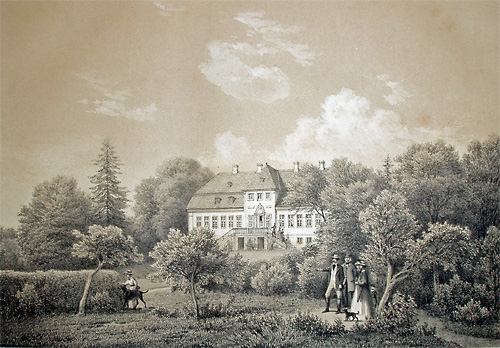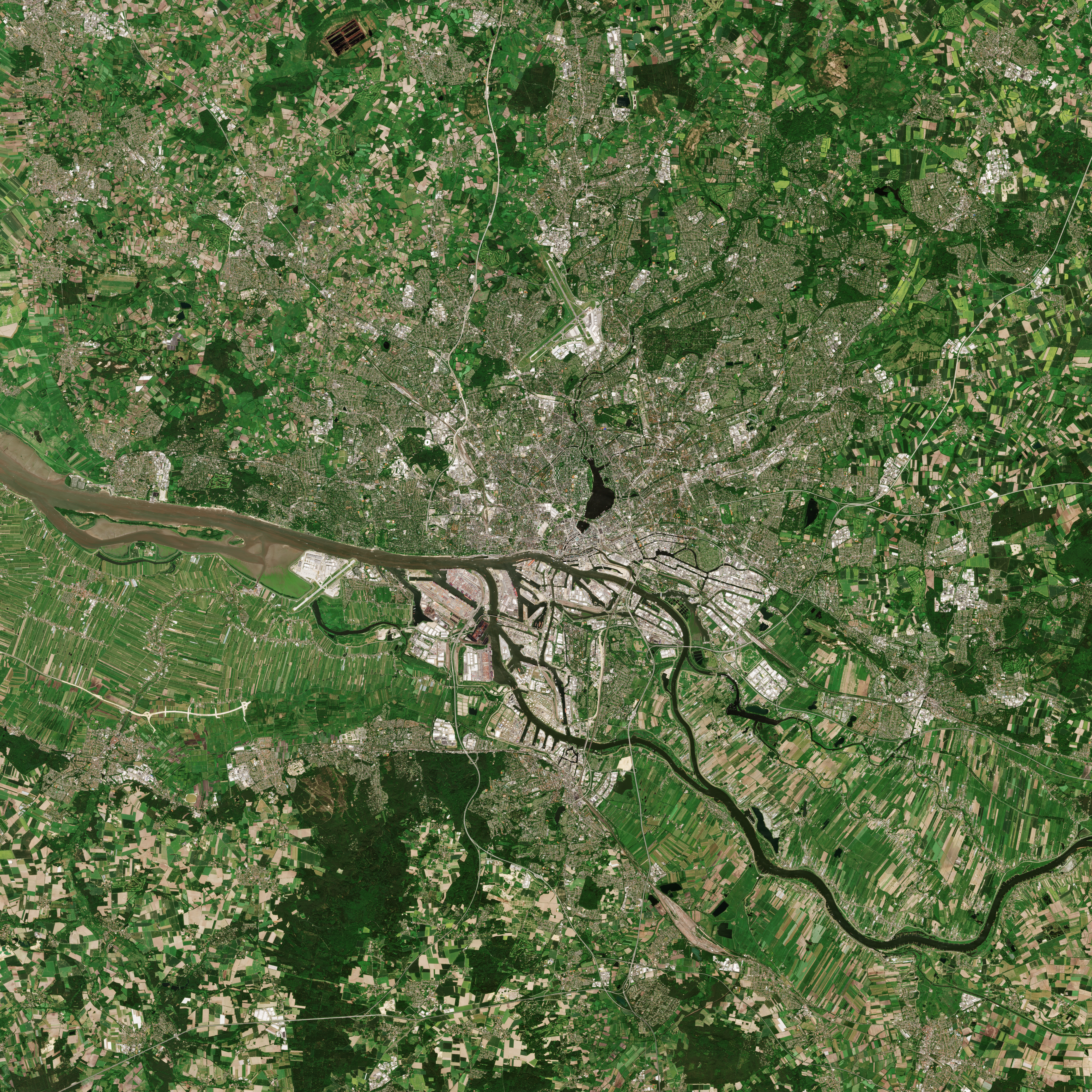|
Constantinsborg
Constantinsborg is a manor in Aarhus Municipality, Denmark which has existed since at least 1400. It is situated on the southern shore of Årslev Engsø, a newly created nature reserve and shallow lake extension of Brabrand Lake, in Viby J 10 km. south-west of Aarhus. The manor and estate are privately owned today and ran as a farm. Constantinsborg was originally known as Stadsgaard but was later renamed after Constantin Marselis who owned the estate in the 1600s. In the 1800s the Pontoppidan family owned the estate and came to have a large impact on Danish agriculture and the transformation of the Jutland moors into agricultural land. The current main manor building was constructed in the early 1800s while adjoining farm buildings date back to 1870 and the 20th century. History Present day Constantinsborg dates back to around 1400 when it was owned by Erik Jensen Munk and known as Stadsgaard. In 1210 there was a forest named ''Stad'' in the area and is mentioned in the re ... [...More Info...] [...Related Items...] OR: [Wikipedia] [Google] [Baidu] |
Constantin Marselis
Constantin Marselis, or Constantijn Marselis (28 November 1647 - 16 June 1699), was a nobleman of the wealthy Dutch Marselis family. Biography Constantin Marselis was born in Amsterdam as the younger son of Gabriel Marselis (1609–1673) and Isabeau van Straaten. He had an elder brother Vilhelm Marselis (1643-1683) who was fief baron of Güldencrone. In 1667, the King of Denmark Frederik III sent for both Constantin and Vilhelm, to take over two of their father's Danish estates near Aarhus; ''Stadsgård'' and ''Havreballegård''. At the same time, they were appointed as Junkers of the Danish court. In 1668 they were appointed as Kammerjunkers. Shortly after the King's death in February 1670, Constantin Marselis married Sophie Elisabeth Charisius (1647-1706). He and his wife took residence on Stadsgård. After years of neglect from his father and damages from the constant wars with Sweden in the Second Northern War, Constantin renovated Stadsgård extensively. When the ... [...More Info...] [...Related Items...] OR: [Wikipedia] [Google] [Baidu] |
Gabriel Marselis
Gabriel Marselis (1609 – buried 5 April 1673) was a Danish tradesman and land owner. He was born in Hamburg, the son of the immigrated Dutch merchant Gabriel Marselis Sr. (c. 1575–1643), and was a brother of Selius Marselis. He settled in Amsterdam in 1634 and married the year after. The couple had three sons. In 1655 he remarried. His trading with King Christian IV of Denmark-Norway was partly paid with the Crown's properties and goods. Marselis thus became the owner of several iron works and copper works in Norway, and also became one of the largest landowners in Denmark and Norway. Among his sons were Vilhelm, Baron and ancestor of the noble family Güldencrone, and Constantin, Baron of Marselisborg and Constantinsborg at Aarhus Aarhus (, , ; officially spelled Århus from 1948 until 1 January 2011) is the second-largest city in Denmark and the seat of Aarhus Municipality. It is located on the eastern shore of Jutland in the Kattegat sea and approxima ... [...More Info...] [...Related Items...] OR: [Wikipedia] [Google] [Baidu] |
Second Northern War
The Second Northern War (1655–60), (also First or Little Northern War) was fought between Sweden and its adversaries the Polish–Lithuanian Commonwealth (1655–60), the Tsardom of Russia ( 1656–58), Brandenburg-Prussia (1657–60), the Habsburg monarchy (1657–60) and Denmark–Norway ( 1657–58 and 1658–60). The Dutch Republic waged an informal trade war against Sweden and seized the colony of New Sweden in 1655, but was not a recognized part of the Polish–Danish alliance. In 1655, Charles X Gustav of Sweden invaded and occupied western Poland–Lithuania, the eastern half of which was already occupied by Russia. The rapid Swedish advance became known in Poland as the Swedish Deluge. The Grand Duchy of Lithuania became a Swedish fief, the Polish–Lithuanian regular armies surrendered and the Polish king John II Casimir Vasa fled to the Habsburgs. Frederick William, Elector of Brandenburg and Duke of Prussia initially supported the estates in Royal ... [...More Info...] [...Related Items...] OR: [Wikipedia] [Google] [Baidu] |
Fee Tail
In English common law, fee tail or entail is a form of trust established by deed or settlement which restricts the sale or inheritance of an estate in real property and prevents the property from being sold, devised by will, or otherwise alienated by the tenant-in-possession, and instead causes it to pass automatically by operation of law to an heir determined by the settlement deed. The term ''fee tail'' is from Medieval Latin , which means "cut(-short) fee" and is in contrast to "fee simple" where no such restriction exists and where the possessor has an absolute title (although subject to the allodial title of the monarch) in the property which he can bequeath or otherwise dispose of as he wishes. Equivalent legal concepts exist or formerly existed in many other European countries and elsewhere. Purpose The fee tail allowed a patriarch to perpetuate his blood-line, family-name, honour and armorials in the persons of a series of powerful and wealthy male descendants. By k ... [...More Info...] [...Related Items...] OR: [Wikipedia] [Google] [Baidu] |
Baron
Baron is a rank of nobility or title of honour, often hereditary, in various European countries, either current or historical. The female equivalent is baroness. Typically, the title denotes an aristocrat who ranks higher than a lord or knight, but lower than a viscount or count. Often, barons hold their fief – their lands and income – directly from the monarch. Barons are less often the vassals of other nobles. In many kingdoms, they were entitled to wear a smaller form of a crown called a '' coronet''. The term originates from the Latin term , via Old French. The use of the title ''baron'' came to England via the Norman Conquest of 1066, then the Normans brought the title to Scotland and Italy. It later spread to Scandinavia and Slavic lands. Etymology The word ''baron'' comes from the Old French , from a Late Latin "man; servant, soldier, mercenary" (so used in Salic law; Alemannic law has in the same sense). The scholar Isidore of Seville in th ... [...More Info...] [...Related Items...] OR: [Wikipedia] [Google] [Baidu] |
Manchester
Manchester () is a city in Greater Manchester, England. It had a population of 552,000 in 2021. It is bordered by the Cheshire Plain to the south, the Pennines to the north and east, and the neighbouring city of City of Salford, Salford to the west. The two cities and the surrounding towns form one of the United Kingdom's most populous conurbations, the Greater Manchester Built-up Area, which has a population of 2.87 million. The history of Manchester began with the civilian settlement associated with the Roman Britain, Roman fort (''castra'') of ''Mamucium'' or ''Mancunium'', established in about AD 79 on a sandstone bluff near the confluence of the rivers River Medlock, Medlock and River Irwell, Irwell. Historic counties of England, Historically part of Lancashire, areas of Cheshire south of the River Mersey were incorporated into Manchester in the 20th century, including Wythenshawe in 1931. Throughout the Middle Ages Manchester remained a manorialism, manorial Township ( ... [...More Info...] [...Related Items...] OR: [Wikipedia] [Google] [Baidu] |
Hamburg
Hamburg (, ; nds, label=Hamburg German, Low Saxon, Hamborg ), officially the Free and Hanseatic City of Hamburg (german: Freie und Hansestadt Hamburg; nds, label=Low Saxon, Friee un Hansestadt Hamborg),. is the List of cities in Germany by population, second-largest city in Germany after Berlin, as well as the overall List of cities in the European Union by population within city limits, 7th largest city and largest non-capital city in the European Union with a population of over 1.85 million. Hamburg's urban area has a population of around 2.5 million and is part of the Hamburg Metropolitan Region, which has a population of over 5.1 million people in total. The city lies on the River Elbe and two of its tributaries, the River Alster and the Bille (Elbe), River Bille. One of Germany's 16 States of Germany, federated states, Hamburg is surrounded by Schleswig-Holstein to the north and Lower Saxony to the south. The official name reflects History of Hamburg, Hamburg's history ... [...More Info...] [...Related Items...] OR: [Wikipedia] [Google] [Baidu] |
Neoclassical Style
Neoclassical architecture is an architectural style produced by the Neoclassical movement that began in the mid-18th century in Italy and France. It became one of the most prominent architectural styles in the Western world. The prevailing styles of architecture in most of Europe for the previous two centuries, Renaissance architecture and Baroque architecture, already represented partial revivals of the Classical architecture of ancient Rome and (much less) ancient Greek architecture, but the Neoclassical movement aimed to strip away the excesses of Late Baroque and return to a purer and more authentic classical style, adapted to modern purposes. The development of archaeology and published accurate records of surviving classical buildings was crucial in the emergence of Neoclassical architecture. In many countries, there was an initial wave essentially drawing on Roman architecture, followed, from about the start of the 19th century, by a second wave of Greek Revival archite ... [...More Info...] [...Related Items...] OR: [Wikipedia] [Google] [Baidu] |
Netherlands
) , anthem = ( en, "William of Nassau") , image_map = , map_caption = , subdivision_type = Sovereign state , subdivision_name = Kingdom of the Netherlands , established_title = Before independence , established_date = Spanish Netherlands , established_title2 = Act of Abjuration , established_date2 = 26 July 1581 , established_title3 = Peace of Münster , established_date3 = 30 January 1648 , established_title4 = Kingdom established , established_date4 = 16 March 1815 , established_title5 = Liberation Day (Netherlands), Liberation Day , established_date5 = 5 May 1945 , established_title6 = Charter for the Kingdom of the Netherlands, Kingdom Charter , established_date6 = 15 December 1954 , established_title7 = Dissolution of the Netherlands Antilles, Caribbean reorganisation , established_date7 = 10 October 2010 , official_languages = Dutch language, Dutch , languages_type = Regional languages , languages_sub = yes , languages = , languages2_type = Reco ... [...More Info...] [...Related Items...] OR: [Wikipedia] [Google] [Baidu] |
Consul (representative)
A consul is an official representative of the government of one state in the territory of another, normally acting to assist and protect the citizens of the consul's own country, as well as to facilitate trade and friendship between the people of the two countries. A consul is distinguished from an ambassador, the latter being a representative from one head of state to another, but both have a form of immunity. There can be only one ambassador from one country to another, representing the first country's head of state to that of the second, and their duties revolve around diplomatic relations between the two countries; however, there may be several consuls, one in each of several major cities, providing assistance with bureaucratic issues to both the citizens of the consul's own country traveling or living abroad and to the citizens of the country in which the consul resides who wish to travel to or trade with the consul's country. A less common usage is an administrative co ... [...More Info...] [...Related Items...] OR: [Wikipedia] [Google] [Baidu] |

.jpg)



_-_facade_on_Piazza_dei_signori.jpg)
.jpg)